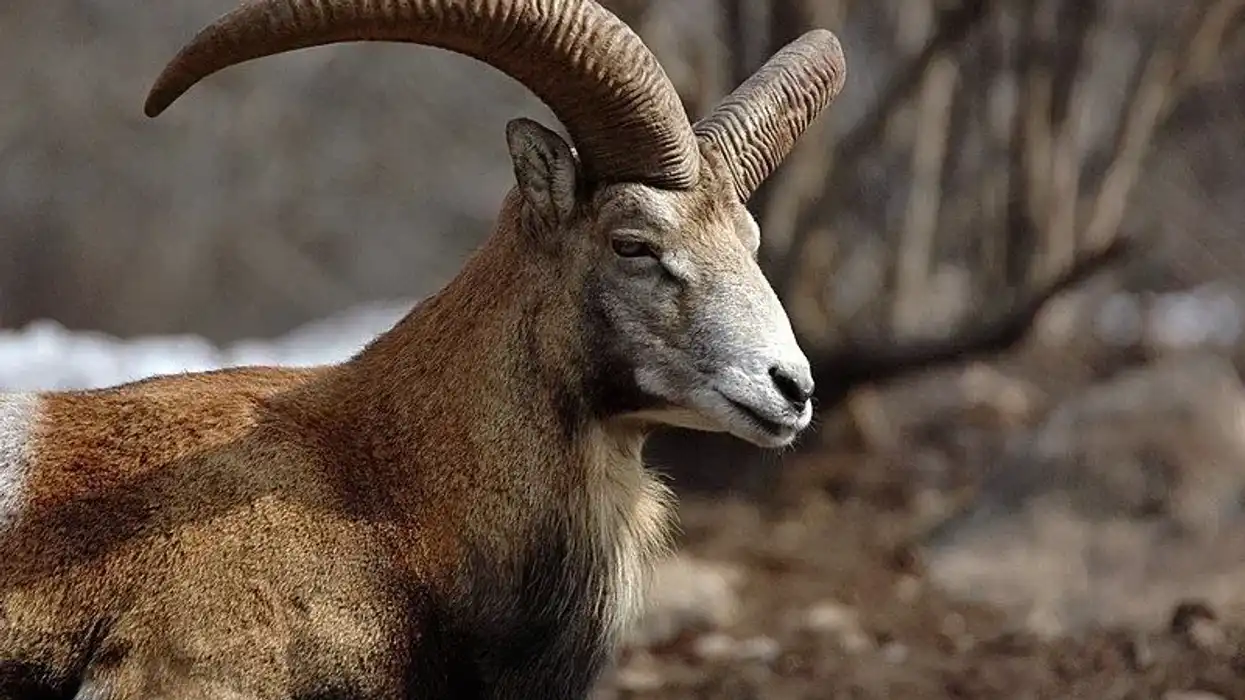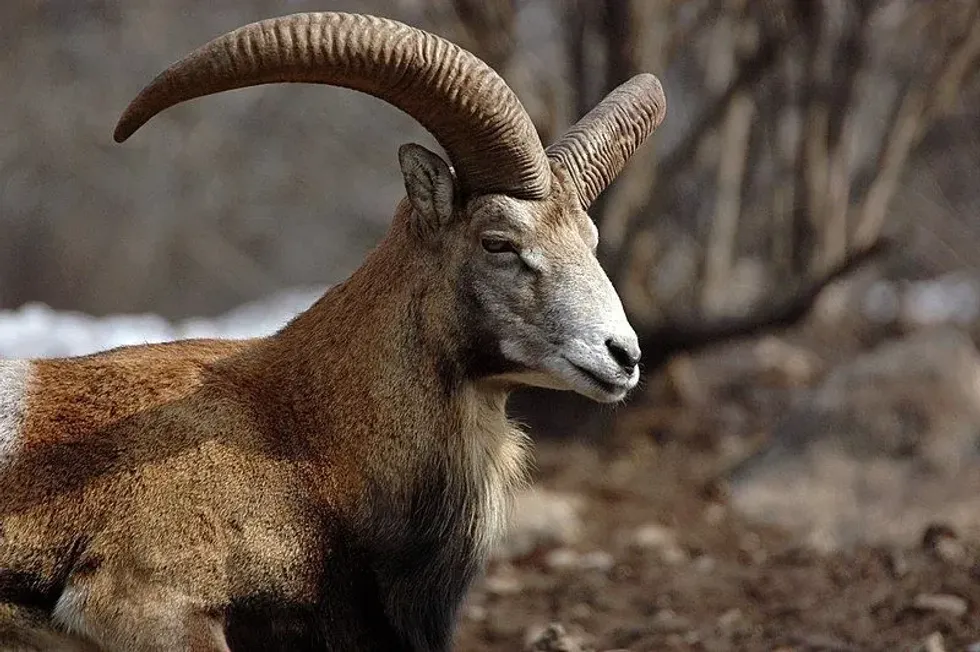You have commonly heard about white and black sheep but did you know that red sheep exist for real? There are a few variations of the red sheep namely the California red sheep, Madras red sheep, and the Iranian red sheep.
The California variation was developed accidentally by Dr. Glenn Spurlock around the '70s when he intended to produce a large-sized sheep by crossbreeding the Tunis and Barbados sheep. Although the attempt proved to be futile, it didn't go in vain as he developed the California red sheep in the process.
On the other hand, the Iranian red sheep is essentially a hybrid between the Armenian mouflon (Ovis gmelini gmelini) and Transcaspian urial (Ovis orientalis arkal).
The Madras red sheep can be found in Tamil Nadu in India. A popular hybrid sheep variety is the Texas Dell sheep.
This hybrid is the result of cross-breeding between the Mouflon ewe and the Rambouillet ram. Red sheep hunts are carried out on a large scale for their high commercial value but these hunts need to be controlled.
If you want to indulge in more intriguing facts about the red sheep then continue reading. For more relatable content, check out these Alpine ibex facts and Merino sheep facts for kids.
Red Sheep Interesting Facts
What type of animal is a red sheep?
The red sheep is a hybrid species of sheep of the Bovidae family.
What class of animal does a red sheep belong to?
The red sheep is a member of the Ovis genus and belongs to the Mammalia class.
How many red sheep are there in the world?
Accurate conclusions cannot be drawn on the population details of this species due to a lack of quantification data.
Where does a red sheep live?
Endemic to Iran, Azerbaijan, and Armenia, Iranian red sheep can be spotted on the Alborz mountains as well as the Kavir desert in Iran. Madras red sheep can be traced to the northern regions of Tamil Nadu in India. The California red sheep was first developed in California but the sheep population is now widespread in the US.
What is a red sheep habitat?
The habitat range of red sheep comprises mountains or hills, deserts, and grassy pastures. They're also maintained in ranches.
Who do mountain sheep live with?
Mountain sheep usually dwell in flocks. Most sheep species are domesticated by shepherds.
How long does a red sheep live?
The longevity of red sheep cannot be stated with accuracy owing to varying adaptations. However, a sheep, in general, survives for around 10-12 years.
How do they reproduce?
Domesticated sheep are bred by farmers and have no specific breeding season. The Madras variation breeds between July and September. Normally, sheep can mate when attaining puberty (from 5-12 months of age). After copulation, the ewe enters into gestation that takes 142-152 days.
The ewe gives birth to a lamb. The health of the offspring depends on the quality of breeding. Did you know that horns tend to play an important defensive role against predators? These horns are also used to fight against competitors and woo the females.
What is their conservation status?
The conservation status of the red sheep is Not Evaluated by the International Union of Conservation of Nature (IUCN) Red List. Nevertheless, some of the red sheep species are believed to be Vulnerable primarily due to unrestrained human activities like hunting.
Red Sheep Fun Facts
What do red sheep look like?
Since red sheep are a hybrid of the Armenian mouflon and Transcaspian urial, some differences in characteristics are predominant. The neck ruff and horn configuration are variable while the saddle patch and bib may be present or absent depending on the variation.
The horns tend to differ too. The red sheep displays a tan to light brown coloration but it sometimes ranges from reddish-brown to grayish-brown. These sheep possess white underparts.
 We've been unable to source an image of red sheep and have used an image of copper-red Shumen sheep instead. If you are able to provide us with a royalty-free image of red sheep, we would be happy to credit you. Please contact us at hello@kidadl.com.
We've been unable to source an image of red sheep and have used an image of copper-red Shumen sheep instead. If you are able to provide us with a royalty-free image of red sheep, we would be happy to credit you. Please contact us at hello@kidadl.com.
How cute are they?
Sheep have some mesmerizing appeal about their appearance. They never fail to make you fall in love at first sight! Little woolly lambs are just too cute to be defined.
How do they communicate?
Like most mammals, a red sheep interacts via innumerable vocalizations. As we all know, a sheep commonly bleats. Apart from bleating, they also grunt, rumble, and snort.
How big is a red sheep?
When measured from the shoulder height, the Iranian red sheep measures approximately 29-32 in (73.7-81.3 cm). In comparison, the blue sheep is larger, measuring around 45-65 in (114.3-165.1 cm).
How fast can a red sheep run?
The accurate speed range of the red sheep remains shrouded in mystery. However, a sheep can attain an average speed of 20 mph (32.2 kph).
How much does a red sheep weigh?
The average weight of the Iranian crossbreed of the Armenian mouflon and Transcaspian urial is about 110-150 lb (49.9-68 kg) while the California red sheep is medium-sized and even bulkier, weighing 130-250 lb (59-113.4 kg).
What are the male and female names of the species?
Generally, male red sheep are regarded as rams while females are termed ewes.
What would you call a baby red sheep?
You can call a baby red sheep a lamb.
What do they eat?
Red sheep indulge in herbivorous meals that include grass, forbs, tree leaves, legumes, hay, whole grain, and several pasture plants.
Are they dangerous?
Sheep are very meek and docile. When they get stranded from the flock, these helpless sheep bleat loudly to seek help from humans. However, certain diseases like sheep flu can be a cause of concern.
Would they make a good pet?
Sheep are reared by farmers and have been considered to be great pets for a long time. They're gentle, friendly, and get along well with kids.
Did you know...
The neck ruff and horn configuration are variable. Normally, the horns tend to be backward curved.
Also, the saddle patch and bib may be present or lacking. As the Iranian red sheep is considered to be a natural hybrid between the Armenian mouflon and Transcaspian urial, the appearance of the sheep depends on the varying number of chromosomes.
The red sheep inhabiting the central regions possess supracervical as well as homonymous horns while the ones residing in the west have supracervical backward-curved horns.
The western variation is more akin to the Armenian mouflon with a saddle patch but an absent bib. This saddle patch is lacking in the eastern variation.
Did you know that the bighorn sheep possesses horns that can weigh about 300 lb (136 kg)? Red sheep don't have such large horns.
Why are they called red sheep?
California red sheep possess a reddish hue right from their birth which they retain through their mature stages. However, the reddish shade eventually fades with age. Although the coloration might vary from reddish-brown to gray-brown, the attribution is mainly because of their appearance.
How useful is a red sheep?
Although most red sheep variations are Endangered, red sheep hunts are famous. Just like the Dall sheep, a hunter hunts down the Iranian and California red sheep for their delectable tender meat as well as high-quality silky wool preferred by the weavers.
Madras red sheep meat is also known to be popular for its use in cooking up sumptuous meals. In the markets of US, sheep have a high market value.
You can make approximately $150 just for a lamb weighing 80 lb (36.3 kg)! Apart from its meat, the wool extracted from sheep is extremely useful for producing clothing materials and rugs.
Here at Kidadl, we have carefully created lots of interesting family-friendly animal facts for everyone to discover! Learn more about some other mammals from our llama interesting facts and mountain goat fun facts pages.
You can even occupy yourself at home by coloring in one of our free printable bighorn sheep coloring pages.
Main image by Alexander Malkhasyan
We've been unable to source an image of red sheep and have used an image of Armenian mouflon instead as the main image. If you are able to provide us with a royalty-free image of red sheep, we would be happy to credit you. Please contact us at hello@kidadl.com.




 We've been unable to source an image of red sheep and have used an image of copper-red Shumen sheep instead. If you are able to provide us with a royalty-free image of red sheep, we would be happy to credit you. Please contact us at hello@kidadl.com.
We've been unable to source an image of red sheep and have used an image of copper-red Shumen sheep instead. If you are able to provide us with a royalty-free image of red sheep, we would be happy to credit you. Please contact us at hello@kidadl.com.



